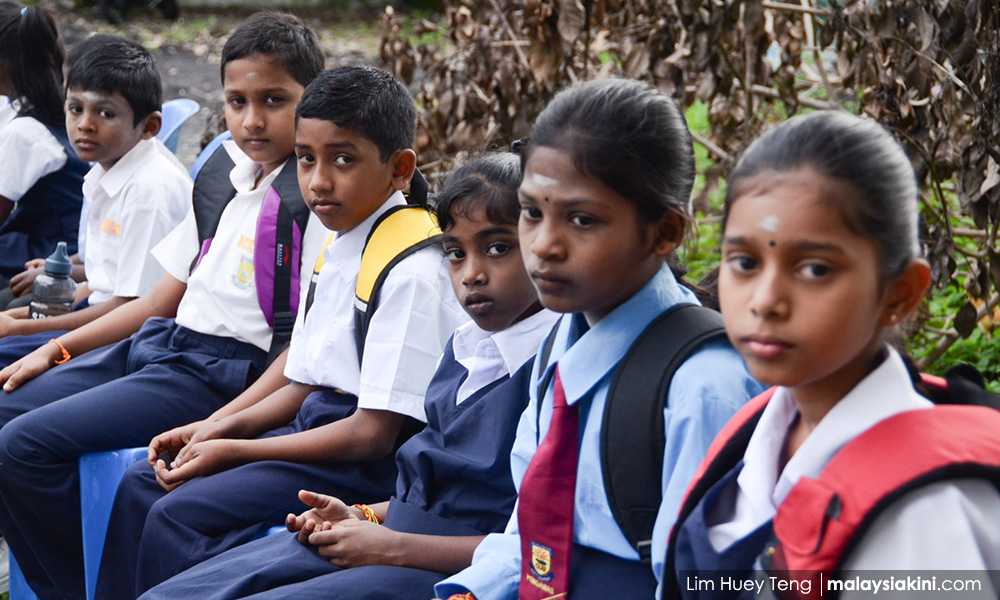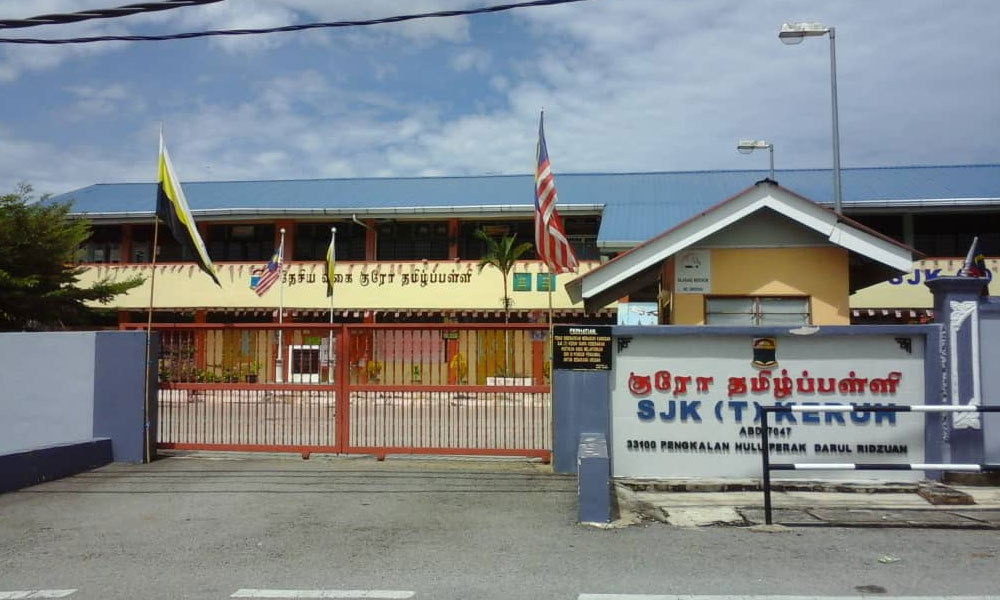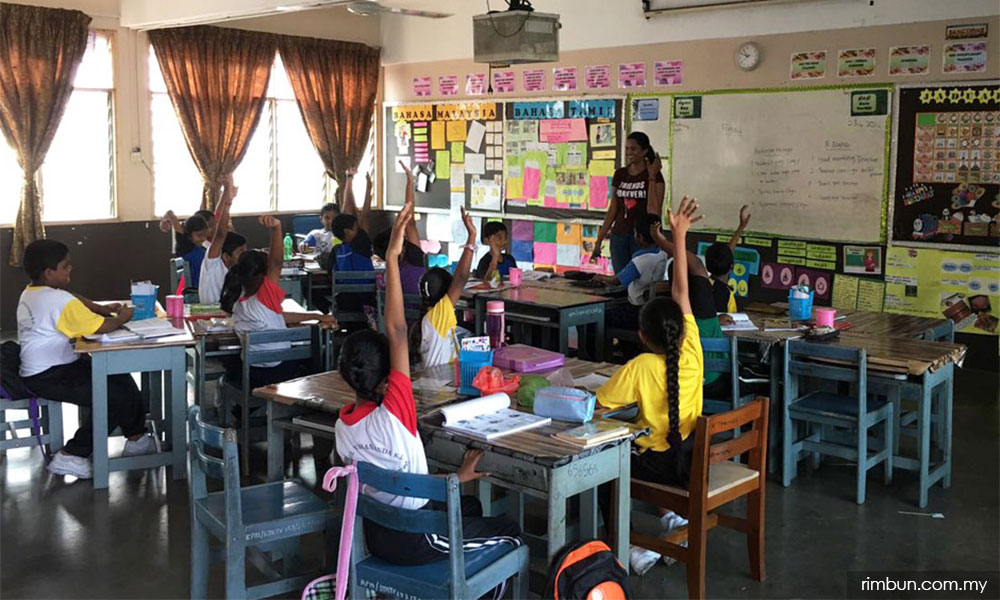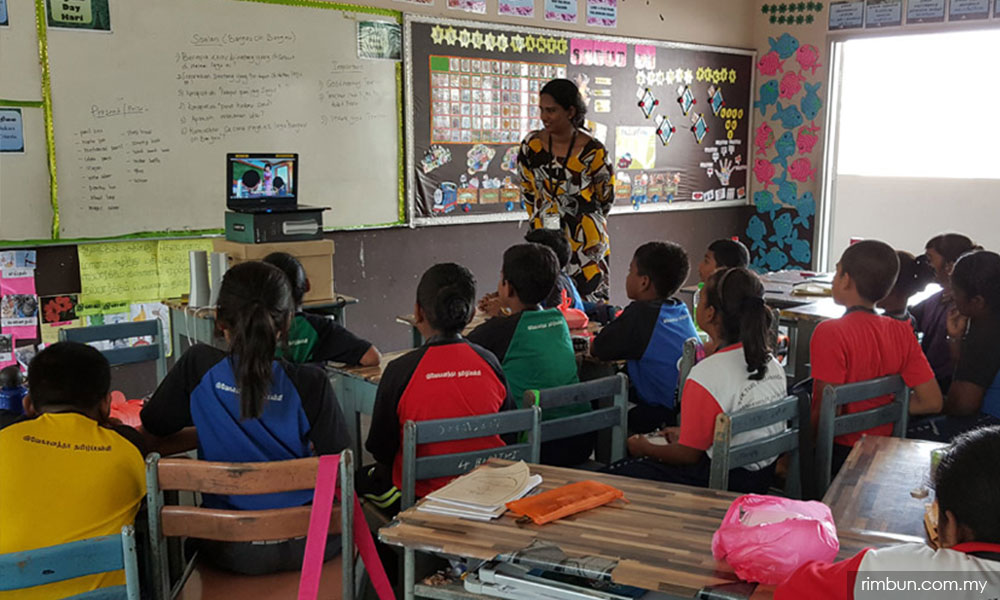
As we know, Tamil schools in Malaysia are lagging behind the national and Chinese schools. Most have cramped conditions and poor facilities, nowhere in comparison with the well-equipped national and Chinese schools.
Tamil education is something that the Indian-Tamil is proud of and it is facing serious challenges. Many Tamil schools are facing an uncertain future owing to falling enrolment numbers.
Most of them struggle to increase student enrolment. Probably, this is due to the fact that most Tamil communities still live in rural areas.
In our country, Tamil education is only until the primary level and after six years of primary education in the vernacular school, students have to pursue their secondary education in the national schools.
There are secondary national, Chinese and private schools but there are no secondary Tamil schools in the country. Why was the establishment of a secondary Tamil school not allowed?

Prior to GE14, the Pakatan Harapan ministers of the Indian descent were vociferous in championing the right to a Tamil education. Minister in Prime Minister’s Department P Waythamoorthy had accused the 525 Tamil schools in the country as being in dilapidated condition, under-resourced with almost no sports, recreational, computer facilities and other basic facilities accorded to the national schools.
Unfortunately, now, Waythamoorthy is dead silent on the above issue and the Harapan government has not lived up to its promises on the Tamil schools reform agenda.
The irony is that none of the current ministers of Indian descent like Waythamoorthy, M Kulasegaran, Xavier Jayakumar or the Indian deputy minister R Sivarasa went to a Tamil school. This is very demotivating.
This clearly shows their show of no-confidence in Tamil education. The question before us is how can they understand thoroughly the issues of the
Tamil schools if they are not Tamil educated? How would they improve and uplift the standards of Tamil schools?
The Education Ministry and the Indian ministers are criticised for their inaction on the “Tamil Schools Action Plan”. Nothing substantial is seen to be done.
The Tamil-educated are not sought after when it comes to jobs, unlike the Malay and Chinese educated. Despite this, more middle-class Indian families are sending their children to Tamil schools. The achievement of Tamil school children has improved so much.
Tamil schools students are winning gold medals at world science competitions. They have proved that they are capable of achieving success if given the right opportunity and support.

“The action plan for the future of the Tamil Schools init” (PTST) established in 2012 by the previous BN government to ensure delivery of the commitment to the Tamil schools in Malaysia is now missing in action.
The government must hold meetings, workshops, town hall sessions and seminars with teachers, parent-teacher associations (PTA), schools' management boards (LPS) and those associated with Tamil schools to revive the ‘Tamil School Action’ plan.
This must be done in places where there are sizeable numbers of Indians. The previous government, since 2009, had allocated RM900 million to improve the infrastructure of Tamil schools, most of which remain as only partially-aided schools.
A comprehensive plan outlining underlying issues such as the conversion of partially-aided Tamil schools to fully-aided ones must be dealt with by the Education Ministry which must also ensure that this is incorporated into the National Education Blueprint.
The previous BN government had also established a special unit for the socio-economic development of the Indian community called Sedic. This was later restructured for better implementation of the Indian blueprint.
The roles and functions of the then existing units, namely the Special Implementation Task Force (SITF), the Secretariat for the Empowerment of Indian Entrepreneurs (Seed) and the Action Plan for the Future of Tamil Schools (PTST) were absorbed into the Malaysian Indian Blueprint.

Sedic was established under the then prime minister’s purview to solely implement the Malaysian Indian Blueprint. As a result of this, most Indians felt that the rights of the Indians were respected and rightfully empowered.
Now, Sedic has been rebranded as the Malaysian Indian Transformation Unit (Mitra) and placed under Waythamoorthy. It has only been tasked with giving out training grants and assistance to NGOs to run programmes for the community. Mitra operates in a small circle and has no authority to recommend nor make policy decisions on the Tamil schools action plan.
Mitra under the purview of Waythamoorthy appears to be a weak and an inferior entity. Much of Mitra’s key results are shrouded in mystery. It is uncertain how effective Mitra would be in the areas of education, (especially on the “Action Plan for Tamil Schools”), social welfare, the stateless issue, career opportunities and inclusiveness.
Currently, there are 525 Tamil schools nationwide. Some new one are being built under licences approved by the previous government. We are not sure how many have been completed and functioning especially after GE14.
Mitra must not just remain a government spokesperson and sugarcoat things to make them sound better than they really are.
The government must look into various priority issues such as under-enrolled Tamil schools, the quality of teaching and learning, including Hindu religious studies in the syllabus, infrastructure, parent-community participation, pupils' achievement and solutions to overcome the shortage of teachers to teach Bahasa Malaysia and English.
M VIVEK served as an aide to several former MIC deputy ministers. - Mkini



No comments:
Post a Comment
Note: Only a member of this blog may post a comment.